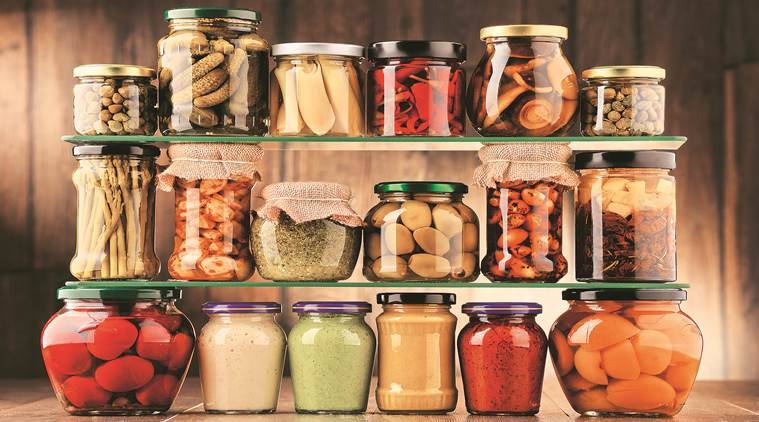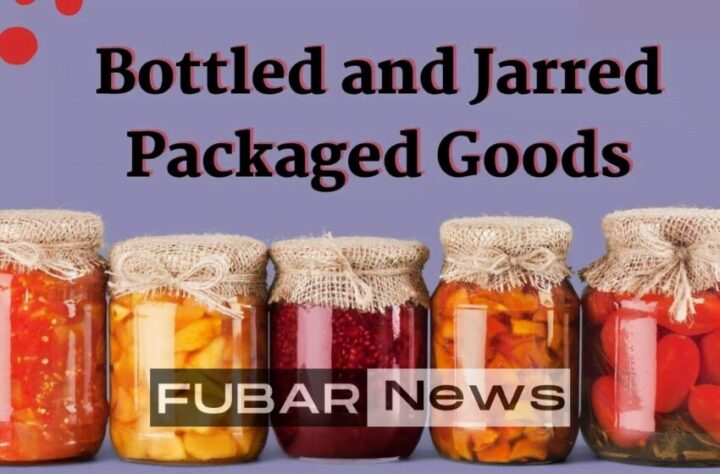Packaged goods are an essential part of our daily lives. We use them for storing, preserving, and transporting food and other items. Bottled and jarred packaged goods are particularly popular, with a wide range of products available, including sauces, condiments, drinks, and more. While these products offer many benefits, they also have some drawbacks. In this article, we’ll take a closer look at the pros and cons of bottled and jarred packaged goods.
Introduction
Packaged goods are products that have been sealed in some type of container for distribution and consumption. Bottled and jarred packaged goods are particularly popular and can be found in virtually every grocery store. While these products offer many benefits, they also have some drawbacks that consumers should be aware of.
What are Bottled and Jarred Packaged Goods?
Bottled and jarred packaged goods refer to products that are stored in glass, plastic, or metal containers. These products can range from food items like sauces, jams, and pickles to drinks like soda, juice, and water. Bottled and jarred packaged goods are popular because they are convenient, easy to store, and have a longer shelf life than fresh products.
The Advantages of Bottled and Jarred Packaged Goods

Convenience
One of the biggest advantages of bottled and jarred packaged goods is convenience. These products are easy to find in stores and can be stored at home for an extended period. They are also easy to transport, making them a popular choice for picnics, lunches, and other outings.
Longer Shelf Life
Another advantage of bottled and jarred packaged goods is that they have a longer shelf life than fresh products. This is because they are often processed and sealed in a way that prevents bacteria and other harmful microorganisms from growing. This means that they can be stored for longer periods without spoiling or going bad.
Preserving Flavor
Bottled and jarred packaged goods are also popular because they help to preserve the flavor of food and drinks. Many products are made with preservatives and other additives that help to maintain their taste and texture. This means that consumers can enjoy their favorite foods and drinks even when they are out of season or not readily available.
Easy to Transport
Bottled and jarred packaged goods are also easy to transport. They are often sold in lightweight containers that are easy to carry and can be stacked for efficient storage. This makes them a popular choice for people who are always on the go and need to take their food and drinks with them.
Cost-Effective
Finally, bottled and jarred packaged goods are often more cost-effective than fresh products. This is because they can be produced in large quantities and are often sold in bulk. This means that consumers can save money by purchasing these products in larger quantities, rather than buying small amounts of fresh products.
The Disadvantages of Bottled and Jarred Packaged Goods

Environmental Impact
One of the biggest disadvantages of bottled and jarred packaged goods is the environmental impact. These products are often made with non-renewable resources like plastic and metal, which can take hundreds of years to decompose. Additionally, the production, transportation, and disposal of these products can contribute to greenhouse gas emissions, air pollution, and other environmental problems.
Health Concerns
Another disadvantage of bottled and jarred packaged goods is the potential health concerns. Many of these products are made with artificial preservatives, colors, and flavors, which can have negative health effects over time. Additionally, some products may contain high levels of sugar, salt, or other unhealthy ingredients.
Artificial Ingredients
Bottled and jarred packaged goods are also often made with artificial ingredients, which can be a concern for health-conscious consumers. These products may contain additives like preservatives, colors, and flavors that can have negative health effects over time.
Limited Varieties
Another disadvantage of bottled and jarred packaged goods is the limited varieties available. While there are many different products available, the selection is often limited to the most popular and profitable items. This means that consumers may not be able to find their favorite products or may have to settle for less desirable options.
Quality Concerns
Finally, bottled and jarred packaged goods may have quality concerns. These products are often produced in large quantities and may not be as fresh or high-quality as their fresh counterparts. Additionally, the processing and packaging of these products can sometimes affect their taste, texture, and nutritional value.
Conclusion
Bottled and jarred packaged goods offer many benefits, including convenience, longer shelf life, and preserving flavor. However, they also have some significant drawbacks, including environmental impact, health concerns, artificial ingredients, limited varieties, and quality concerns. Consumers should weigh the pros and cons of these products when making purchasing decisions and consider fresh alternatives whenever possible.

FAQs
- Are bottled and jarred packaged goods healthier than fresh products?
- How can I reduce my environmental impact when using bottled and jarred packaged goods?
- What are some alternatives to bottled and jarred packaged goods?
- Can I recycle glass, plastic, and metal containers from bottled and jarred packaged goods?
- Are there any regulations governing the production and labeling of bottled and jarred packaged goods?
1. Are bottled and jarred packaged goods healthier than fresh products?
Bottled and jarred packaged goods can be a convenient and cost-effective option, but they are not necessarily healthier than fresh products. Many packaged goods are made with artificial preservatives, colors, and flavors that can have negative health effects over time. Additionally, some products may contain high levels of sugar, salt, or other unhealthy ingredients. It’s important for consumers to read labels and consider the nutritional value of products when making purchasing decisions.
2. How can I reduce my environmental impact when using bottled and jarred packaged goods?
There are several ways to reduce your environmental impact when using bottled and jarred packaged goods. First, consider purchasing products that use sustainable packaging materials, like glass or paper. Second, look for products that are produced locally, which can reduce the environmental impact of transportation. Finally, consider recycling or reusing packaging materials whenever possible.
3. What are some alternatives to bottled and jarred packaged goods?
There are several alternatives to bottled and jarred packaged goods. Fresh produce and bulk items can be a great option for reducing waste and avoiding artificial ingredients. Additionally, homemade products like sauces, jams, and pickles can be a fun and sustainable alternative.
4. Can I recycle glass, plastic, and metal containers from bottled and jarred packaged goods?
Glass, plastic, and metal containers from bottled and jarred packaged goods can often be recycled. However, it’s important to check with your local recycling program to determine which materials are accepted and how to properly prepare them for recycling.
5. Are there any regulations governing the production and labeling of bottled and jarred packaged goods?
Yes, there are regulations governing the production and labeling of bottled and jarred packaged goods. The Food and Drug Administration (FDA) sets standards for product labeling and packaging, including requirements for nutrition information, ingredient lists, and allergen warnings. Additionally, there are regulations governing the production and processing of food products to ensure safety and quality.
Also read:
- Lucky Dog Glass is the Best Choice for Your Auto Glass Needs
- Pest Control Tips From the Experts – Here’s How To Keep Them Away
- Skintes: The Online Platform for Skincare Solutions
- Navigating the Uncertainty Surrounding the Pegasus Spyware Scandal
- Creed Cologne Review: Unleashing the Sophistication in You


